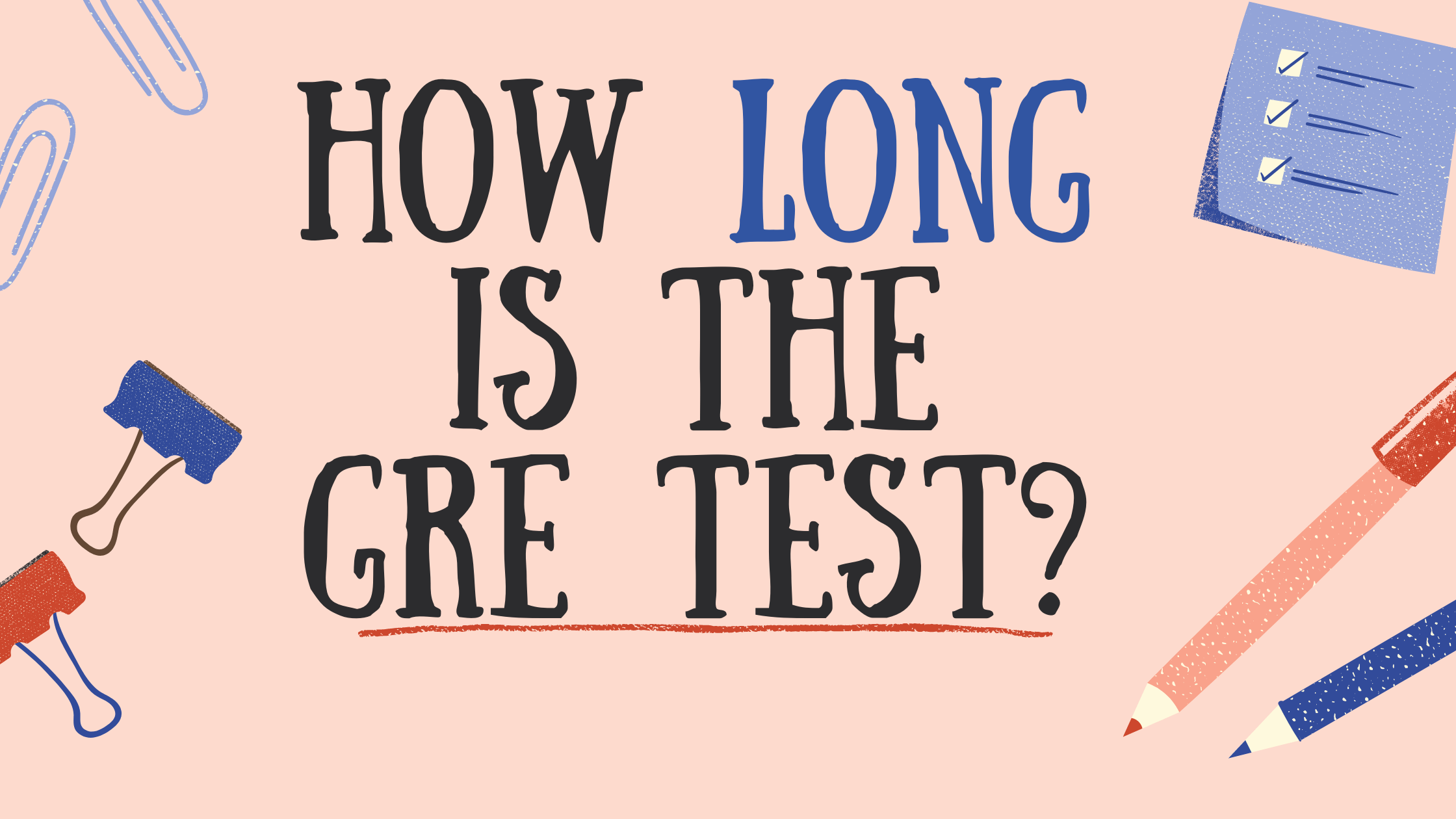The recent changes to the GRE General Test are set to revolutionize the test-taking experience. It’s essential to understand its revamped structure, scoring, and the impact of question difficulty on your overall performance. These changes aim to make the GRE experience more accessible while still measuring the most important skills. While the test duration has been reduced and certain sections eliminated, your smart preparation remains pivotal.
The shorter GRE General Test is section-adaptive, and its scoring algorithm is difficult to understand. If you are en route to taking the new GRE, it is important to understand how the test is actually scored. We will dive into all the different elements of the GRE scoring process.
In the shorter GRE test, you will be scored in three different ways:
- Quantitative Reasoning: the scale of 130-170, with 1 or 2-point increments.
- Verbal Reasoning: the scale of 130-170, with 1 or 2-point increments.
- Analytical Writing: the scale of 0-6, with half-point increments.
GRE analyzes your Math (Quantitative), English (Verbal), and Writing Skills. The verbal and Quantitative sections constitute the total GRE Score of 340. You will also receive a separate score for Analytical Writing, which does not count in the overall GRE score of 340.
Two Quantitative (Quant) and Verbal sections in a GRE are graded. Section 1 has 12 questions, whereas section 2 has 15 questions, totaling 27 Quant and 27 verbal questions.
Students assume that the score difference between 130 and 170 is 40 points, and since there are 27 questions for each Quant and Verbal, that would mean that each question is worth 1.48 points. This is incorrect; let us understand how the GRE is scored correctly.
Questions Difficulty Level
GRE is a standardized exam. Despite 54 questions graded on the GRE test- 27 verbal and 27 quant- each question has its own difficulty level.
The difficulty levels for individual questions are rated between levels 1 to 5;
-
Difficulty Level 1 = Very Easy
-
Difficulty Level 2 = Easy
-
Difficulty Level 3 = Medium
-
Difficulty Level 4 = Hard
-
Difficulty Level 5 = Very Hard
The difficulty level of questions varies ascendingly based on the number of questions answered correctly.
Verbal Reasoning Sections’ Difficulty Level
Besides the questions, each GRE section is also divided into difficulty levels listed below.
- Easy Section
- Medium Section
- Hard Section
The first section has 12 questions with a variety of questions that range from a Difficulty Level (DL) of 1 to 4. It is a misconception that the medium-difficulty section will carry all medium-level questions. The questions are organized in such a way that the majority are medium-level questions (DL 3), while a few are easy (DL 1-2), and a few hard-level questions (DL 4).
The second section has 15 questions, ranging from a Difficulty Level (DL) of 1 to 5. It is a misconception that the GRE is an easy, medium, or hard test. Your performance in the first section will affect your second section. The number of correct answers in the first section determines whether the second section will be easy or difficult, affecting the distribution of questions (DL 1 to DL 5).
Section Adaptive Mechanism
In the GRE adaptive scoring algorithm, the first section always has a medium difficulty level. However, the second section’s difficulty depends on a student’s performance in the first section.
The scoring scale is influenced by the difficulty levels of the sections. If students answer 0 questions correctly out of 12 in the first section, they will be given an Easy second section. Even if they answer only 3 questions correctly in the first section, they will still get an Easy second section. When students get 4 questions correct in the first section, they move on to a Medium-difficulty second section. The same applies if they answer 7 questions correctly in the first section.
However, if students can answer 8 to 12 questions correctly in the first section, they will face difficulty in the second section. So, performance in the first section determines the level of challenge in the second section.
As per the new GRE adaptive scoring algorithm, the difficulty levels for the two graded sections for each quant and verbal are as follows;
- Section 1 – Medium
- Section 2 – Easy or Medium or Hard
The difficulty level in the 2nd section will determine your bonus points or penalties. Therefore, if you do well on the first section and can get a Hard difficulty level for Section 2, you can score +3 than someone who got a Medium or +5 if you get an Easy level in Section 2.
The questions within a section do not change once the algorithm has determined its difficulty level, i.e., Easy, Medium, or Hard.
All questions (difficulty level 1 to 5) will carry equal marks within a section. What varies is the overall weightage of the section (Hard, medium, easy) in determining the overall scores. The weightage of each section increases with the level of difficulty assigned to that section.
How is the difficulty level of sections determined?
Based on hundreds of scenarios, here are some estimated predictions of how sections adapt according to the proficiency of the test-takers. If you get 8 to 12 correct on the first section, the next section will be of a hard difficulty level. If you get 7 or 4 correct on the first section, the next section will be of medium difficulty level. If you get 0 to 3 correct on the first section, the next section will be of easy difficulty level.
Achieving a high difficulty level in the second section can significantly increase your chances of obtaining a maximum score, as it allows for better differentiation among high-scoring test-takers.
Scenario 1:
GRE is a standardized exam. Despite 54 questions graded on the GRE test- 27 verbal and 27 quant- each question has its own difficulty level.
Medium -> Hard (170 Score)
Achieving a perfect score of 170 in the GRE’s quantitative section is no small feat. The test’s adaptive nature means that the difficulty of questions can increase as you answer correctly, making it crucial to maintain accuracy throughout. This section-level adaptivity can be challenging, but understanding it is key to excelling.
GRE prep courses offer strategies and insights that help test-takers understand the adaptive nature of the exam and improve their performance across varying difficulty levels.
First Second: Medium
The first section will always be medium level in difficulty. In this section, you will mostly see questions ranging from very easy to hard. There is no DL5 very hard-level question.
- DL 1 (Very Easy) = 2 Questions
- DL 2 (Easy) = 4 Questions
- DL 3 (Medium) = 5 Questions
- DL 4 (Hard) = 1 Question
- DL 5 (Very Hard) = 0 Question
If someone gets 12 out of 12 correct on the first section, the next section will have a Hard Difficulty level.
Second Section: Hard
The distribution of scores will be as follows:
- DL 1 (Very Easy) = 0 Questions
- DL 2 (Easy) = 4 Questions
- DL 3 (Medium) = 6 Questions
- DL 4 (Hard) = 4 Questions
- DL 5 (Very Hard) = 1 Question
Do you see the distribution of questions in the hard section being more toward medium—to hard-level questions? There is no question of DL 1 (very easy).
Total Score: 170 / 170
Scenario 2:
Medium -> Medium (158 Score)
First Section: Medium
The first section will always be medium level in difficulty. In this section, you will mostly see questions ranging from very easy to hard.
If you answer 7 correct questions in section 1 and 5 wrong questions out of 12, your next section will be medium-level.
Second Section: Medium
In the second section, if you correct all 15 questions, your total score will be 158.
Scenario 3:
Medium -> Easy (151 Score)
First Section: Medium
If you do a maximum of 3 correct and 9 wrong in section 1, your next section will be easy-level.
Second Section: Easy
Even if you do all the questions correctly in the 2nd Easy section, your total score will be 151.
The distribution of questions will be as follows:
- DL 1 (Very Easy) = 3 Questions
- DL 2 (Easy) = 6 Questions
- DL 3 (Medium) = 6 Questions
- DL 4 (Hard) = 0 Questions
- DL 5 (Very Hard) = 0 Question
Do you see the distribution of questions in the easy section? There is no question of DL 4 (hard) or DL 5 (very hard).
This will give you a clear idea of how the section’s difficulty level will impact your scoring and the distribution of questions.
How the shorter GRE test is scored and GRE scores calculated?
Let’s look at how students’ scores are affected by their performance in the GRE sections. The table above highlights three scenarios.
Remember that the more difficult questions you answer in the first section, your overall GRE score will be higher.
- If a student answers 18 questions correctly in the Medium (first) and Hard (second) sections, their score will be 155.
- Alternatively, if another student answers 18 questions correctly in both the Medium (first) and Medium (second) sections, their score will be 152, as they face a slight deduction of 3 points.
- Finally, if a different student gets 18 questions correct in the Medium (first) section but answers the Easy (second) section, their score will be 150, with a 5-point deduction.
This demonstrates how individual performance across different sections can influence the final GRE score.
Moreover, easy sections carry less weight towards your final score, whereas highly difficult sections carry much more weight.
| Scenarios | Section 1 | Section 2 | Total Correct | Score | Difference |
| Student A | Medium | Hard | 18 | 156 | Hard – Medium = +3 |
| Student B | Medium | Medium | 18 | 153 | Medium – Easy = +2 |
| Student C | Medium | Easy | 18 | 151 | Hard – Easy = +5 |
Conclusion
Understanding how GRE tests are scored is crucial to preparing for your exam. Now that you know the GRE has an adaptive scoring mechanism, it is important to focus on scoring well in the first section.
-
According to the GRE section adaptive scoring algorithm, the “Easy” section counts less toward your total score, while challenging sections count significantly more.
Analytical Writing Section Scoring Process
The essay you write in the Analytical Writing section is part of the analytical writing measure and is read by a trained grader who gives it a score from 0-6. Then the essay is scored by an e-reader, a computer program created by ETS to grade writing skills in multiple areas. If the human grader’s and e-reader’s scores are within one point of each other, then the average of those two scores is used as the final essay score. If they disagree, a second human grader scores the essay, and the average human score is the final essay score.
Both human raters and the e-rater evaluate essays based on features related to writing proficiency, emphasizing the importance of organization and articulation over grammar and spelling. This ensures that the scoring process accurately reflects the test taker’s ability to present and support complex ideas effectively.
How will the test preparation differ for the shorter GRE?
The test preparation for the shorter GRE comes with its own considerations. Now, let’s look at some aspects we must consider while preparing for the shorter GRE.
- A shorter GRE means fewer questions, but the scoring is the same, meaning each question carries more weight. As a result, your margin of error is low.
- Due to the shorter GRE and low margin of error, good accuracy and skills are important, especially if you are looking for a high percentile.
- GRE is a section-adaptive test, so performance on the first section will determine the difficulty level of the next section.
- Due to the section-adaptive test, a 3-point bonus will be given if you perform well in the first section.
- If you perform average in the first section, your next section will be medium, and you will receive a penalty of 3 points compared to the hard-level section.
- If you perform poorly in the first section, you will get an easier section and a 5-point penalty.
- Study as per your current mock and target score for effective GRE preparation. If you are unsure how it works and need guidance, you can always get help from Scholar Den GRE experts.
- A shorter GRE will test your time management skills, so take practice tests.
- The Shorter GRE test focuses more on skills, so expect tricky questions. Avoid using outdated questions.
- Stick with the latest official content on Scholar Den.
As you prepare for the GRE, keep these changes in mind and adapt your study strategies accordingly. You should avail one-to-one FREE personalized mentoring from our GRE experts and use the latest content on Scholar Den.
Read on: New Shorter GRE Test Changes









